A Timeless Journey Through Bulgaria’s Cultural Heart
Walking through Plovdiv is like stepping through millennia. Founded over 8,000 years ago – long before Rome or Athens – this Bulgarian gem has been shaped by Thracians, Romans, Byzantines and Ottomans, each leaving their indelible mark on its cobbled streets and sun-drenched hills. Unlike Pompeii or Troy, Plovdiv isn’t a frozen relic of the past; it’s a living, breathing city where ancient ruins host jazz concerts, Roman stadiums lie beneath fashion boutiques, and 19th-century mansions serve rakia to modern travelers.
Here’s why this UNESCO-listed city deserves your attention and should top your list of things to do in Plovdiv when visiting Bulgaria.
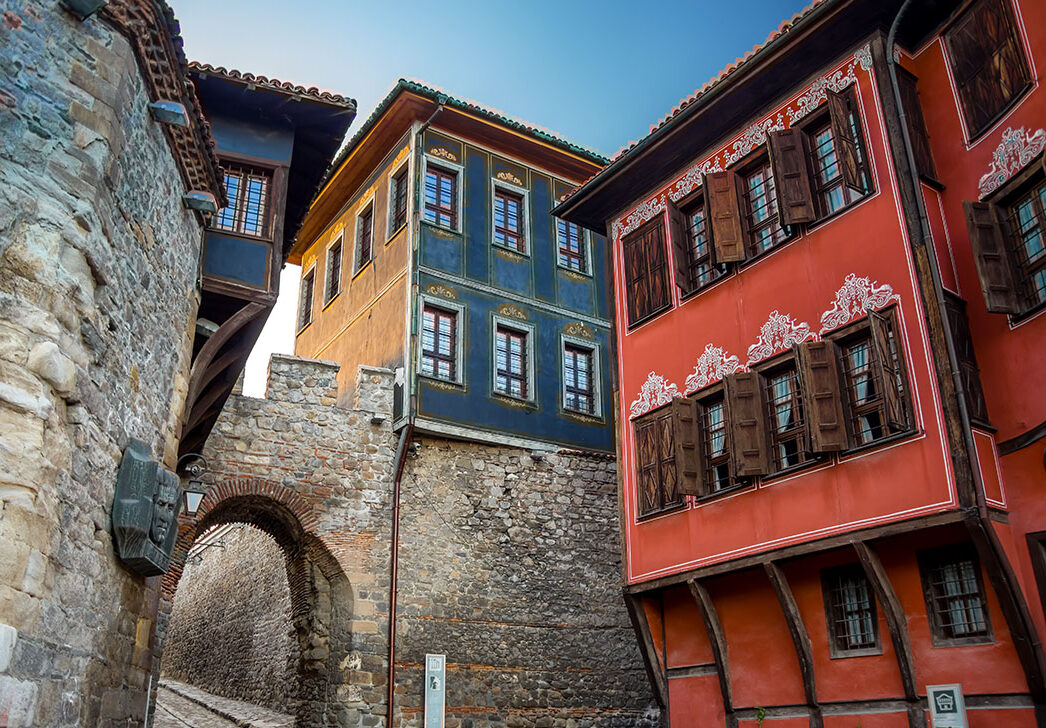
A Journey Through Time in Europe’s Oldest City
Neolithic Beginnings
Plovdiv’s story begins in 6,000 BCE, when Neolithic settlers built atop its seven hills (six remain today). Archaeologists have found ceramic fertility goddesses from this era – some of Europe’s oldest artifacts, making this truly the oldest city in Europe.
Thracians & Philip II of Macedonia
By 4,000 BCE, the Thracians established Eumolpias, a fortified city. In 342 BCE, Philip II of Macedon (father of Alexander the Great) conquered it, renaming it Philippopolis. Remnants of his walls still stand on Nebet Tepe, one of Plovdiv’s most fascinating historical sites.
La Grandeur Romaine
Under Rome (1st-4th century CE), Plovdiv thrived as Trimontium. Marvels include:
- The Ancient Theatre (built under Emperor Trajan, still hosting performances)
- The Roman Stadium (once seating 30,000 for chariot races, now hidden under Main Street)
- The Forum & Odeon (where senators debated)
These spectacular Roman ruins in Bulgaria rival those anywhere in the Mediterranean.
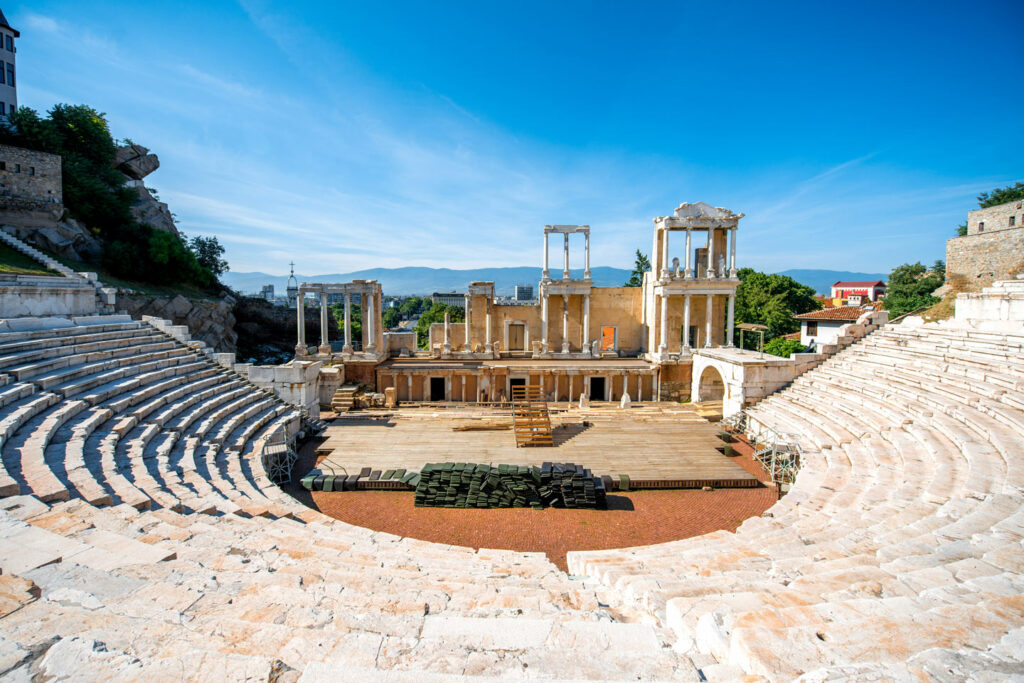
The Language of Stones: Walking Through Plovdiv’s Living History
The uneven Roman-era cobblestones of Plovdiv literally “sing” beneath your feet, their ancient surfaces worn smooth by eight millennia of footsteps. This poetic phenomenon – where the distinctive clatter of shoes on stone creates an almost musical rhythm – serves as the perfect metaphor for a city that has never stopped telling its story.

“The Hill of the Watchers”
Nebet Tepe was not just a fortress—it was also a Thracian oracle site. According to legend, Odysseus himself consulted seers here. This sacred hill, still towering over the city today, served as both a strategic stronghold and a place of divination where Thracian priests interpreted the will of the gods.
Did you know?
Archaeologists have uncovered 3,000-year-old sacrificial altars at this site, confirming its spiritual significance dating back to the Bronze Age. On clear days, the view stretches all the way to the Rhodope Mountains—a panorama unchanged since the time when travelers like Odysseus came seeking omens.
Visitor Tip:
Climb the hill at sunset to see the stones glow red—a time when guides swear “the walls still whisper ancient prophecies.” A magical experience that connects you directly to Europe’s mythological roots.légende dit qu’Ulysse y consulta des voyants.
A City of Six Names
Plovdiv’s 8,000-year history echoes through the six names it has carried across civilizations:
- Eumolpias (Thracian era) – Named after the mythical Thracian king
- Philippopolis (Macedonian rule) – Honoring Philip II of Macedon
- Trimontium (Roman period) – “City of Three Hills”
- Pulpudeva (Slavic settlement) – Preserved in medieval chronicles
- Filibe (Ottoman centuries) – Still used in Turkish today
- Plovdiv (Modern Bulgaria) – First recorded in 15th century manuscripts
This onomastic journey reflects Plovdiv’s unique position as both:
- A crossroads of empires (where each ruler left their linguistic mark)
- A continuous urban center (unlike abandoned ancient cities)
The Miraculous Icon
Within Plovdiv’s Church of the Holy Mother of God, a sacred icon has allegedly wept myrrh continuously since 1854—a phenomenon that remains scientifically unexplained. This 17th-century painting of the Virgin Mary attracts pilgrims seeking healing, with many claiming the fragrant oil has cured illnesses when applied with prayer.
Three Intriguing Facts:
- The myrrh’s chemical composition differs from known church oils
- Weeping patterns intensify during Orthodox holy days
- Soviet-era scientists documented the phenomenon but couldn’t replicate it

From Frescoes to Urban Walls
From Antiquity to the Middle Ages
- Roman mosaics in the Episcopal Basilica featuring peacocks symbolizing immortality
- Byzantine frescoes in Bachkovo Monastery rivaling those of Mount Athos
The Creative Kapana District
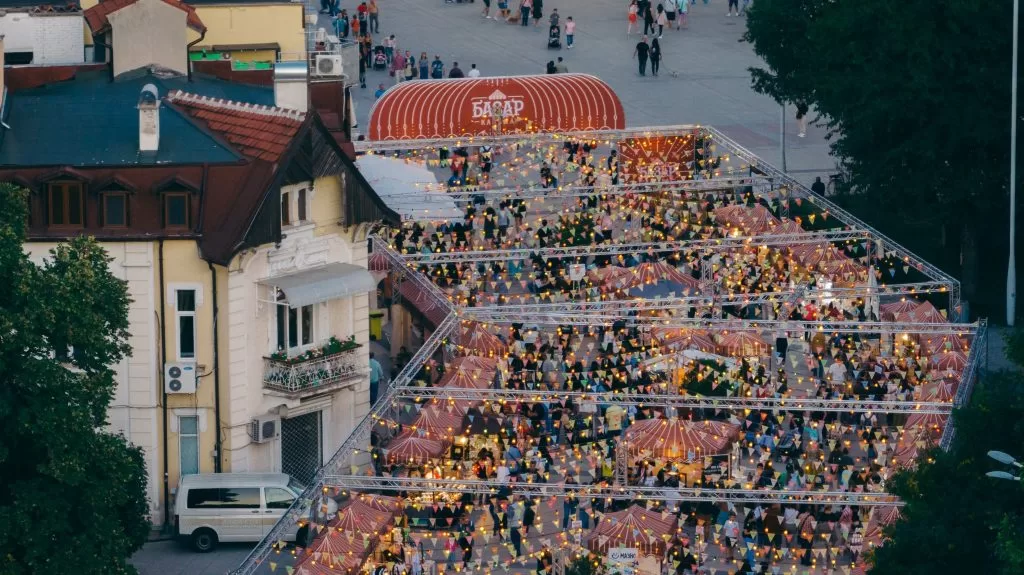
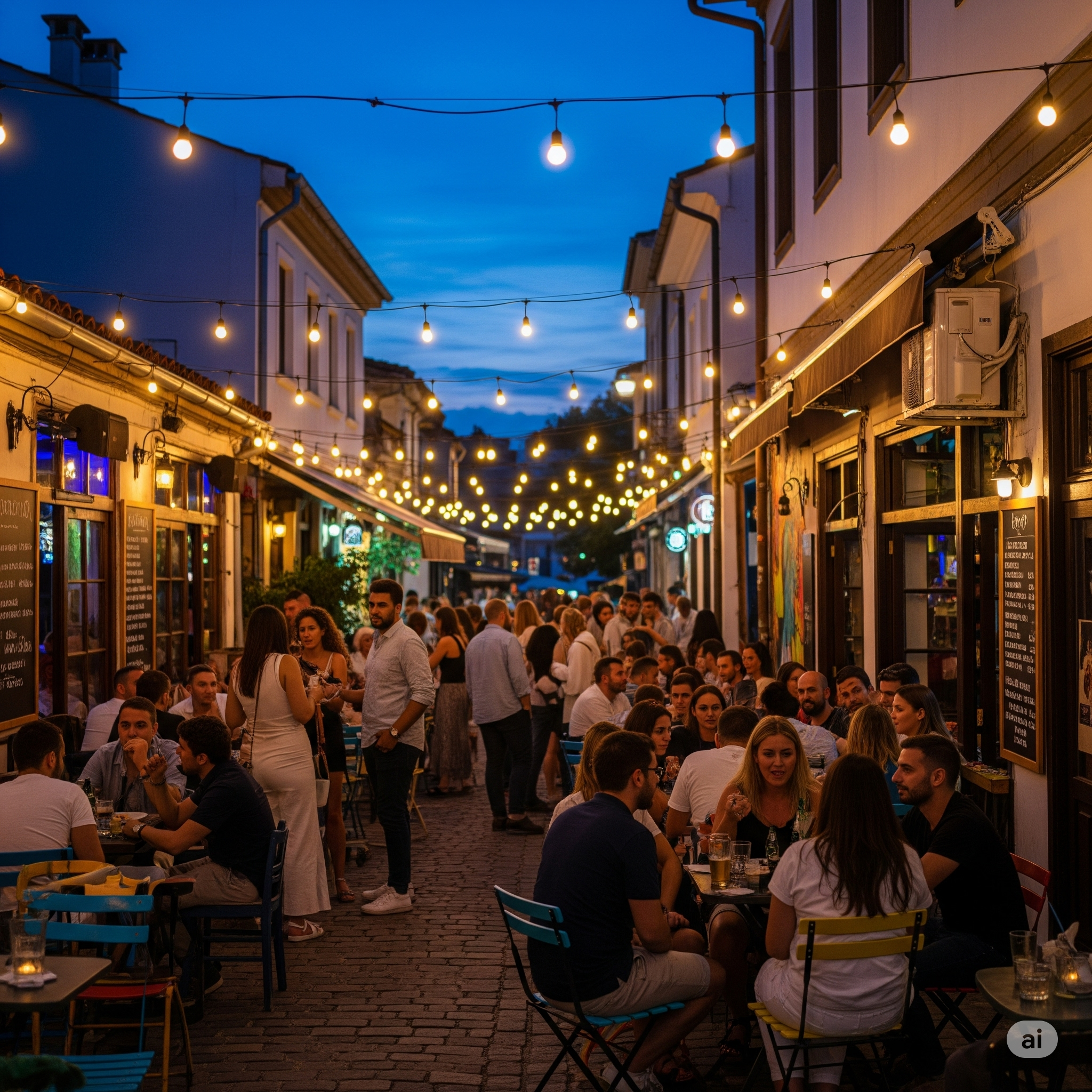
Kapana
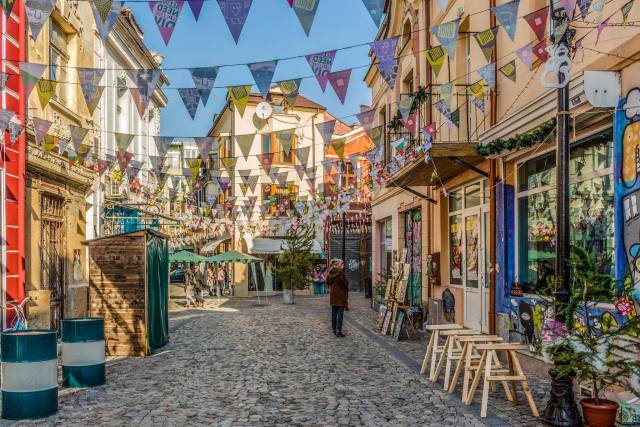
“Kapana” literally means “The Trap” in Bulgarian – this historic nickname references the neighborhood’s maze-like alleys that once “trapped” visitors in their charm.
Bulgarian Revival Craftsmanship
The Ethnographic Museum displays wood carvings, icons, and copper artefacts.
Here you’ll find Bulgaria’s famous multicolored pottery. Visitors can observe workshops crafting traditional costumes. The houses of Old Plovdiv amaze with their magnificent facades. Lose yourself in the cobbled alleys of this magnificent city – Bulgaria’s second largest after Sofia and a European Capital of Culture.
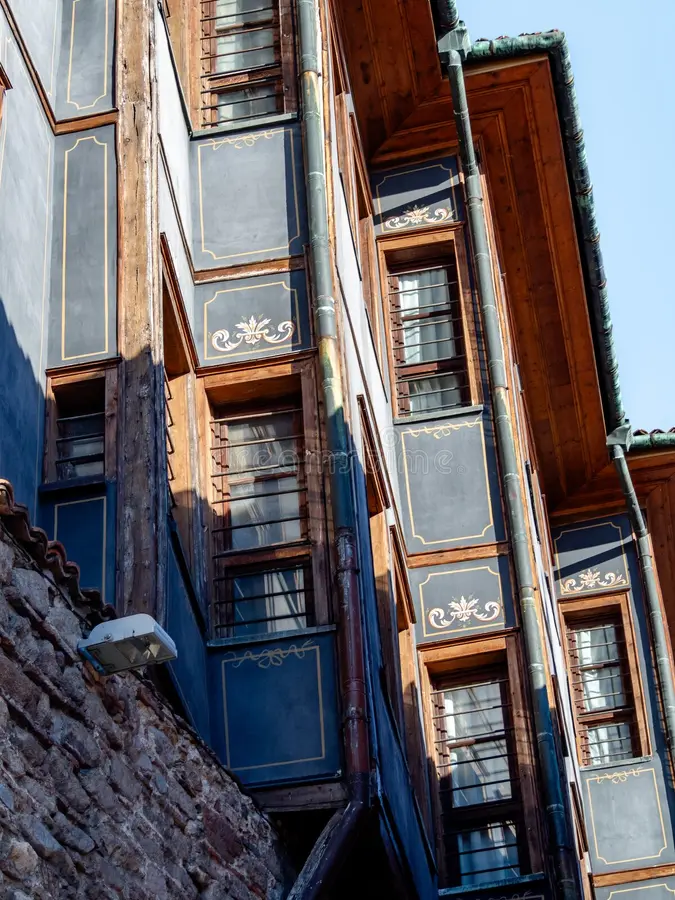
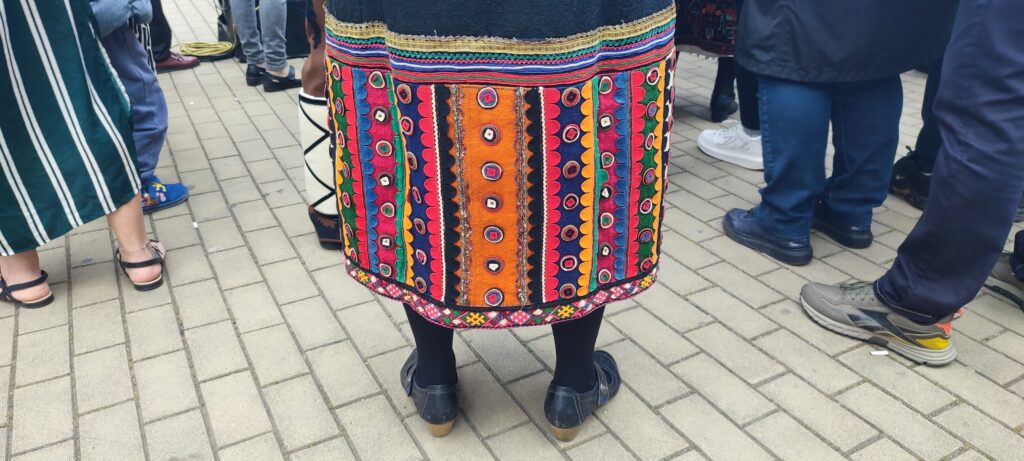
As Plovdiv prepares to celebrate its 8,300th anniversary in 2025, it reminds us that history isn’t just preserved—it’s lived.
Culinary Delights: A Feast Through the Ages
- Patatnik : Galette de pommes de terre et fromage cuite au feu comme il y a 3 000 ans
- Vin Thrace : Le cépage Mavrud, cultivé depuis l’antiquité
- Kavarma : Ragoût en pot d’argile
- Ayran : Boisson au yaourt accompagnant la banitsa (feuilleté au fromage)
Ready to Explore? Skip the overrated destinations—Plovdiv remains Europe’s best-kept secret.
For more articles Jump to our Reportage section